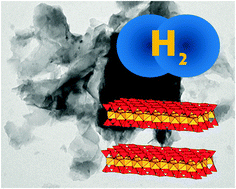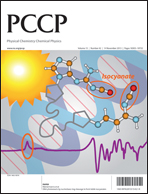Clay-supported graphene materials: application to hydrogen storage†
Abstract
The present work refers to clay–graphene nanomaterials prepared by a green way using caramel from sucrose and two types of natural clays (montmorillonite and sepiolite) as precursors, with the aim of evaluating their potential use in hydrogen storage. The impregnation of the clay substrates by caramel in aqueous media, followed by a thermal treatment in the absence of oxygen of these clay–caramel intermediates gives rise to graphene-like materials, which remain strongly bound to the silicate support. The nature of the resulting materials was characterized by different techniques such as XRD, Raman spectroscopy and TEM, as well as by adsorption isotherms of N2, CO2 and H2O. These carbon–clay nanocomposites can act as adsorbents for hydrogen storage, achieving, at 298 K and 20 MPa, over 0.1 wt% of hydrogen adsorption excess related to the total mass of the system, and a maximum value close to 0.4 wt% of hydrogen specifically related to the carbon mass. The very high isosteric heat for hydrogen sorption determined from adsorption isotherms at different temperatures (14.5 kJ mol−1) fits well with the theoretical values available for hydrogen storage on materials that show a strong stabilization of the H2 molecule upon adsorption.


 Please wait while we load your content...
Please wait while we load your content...